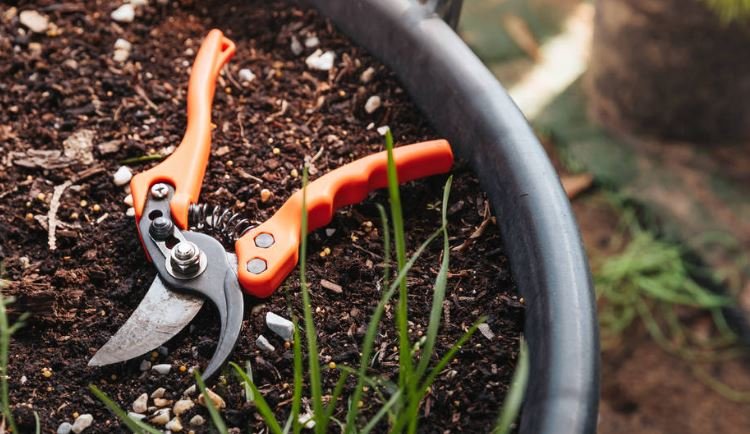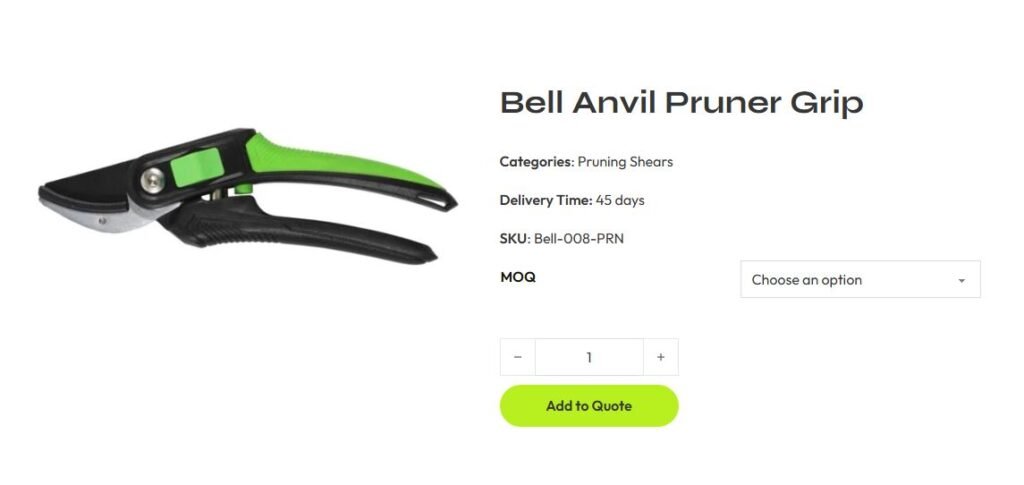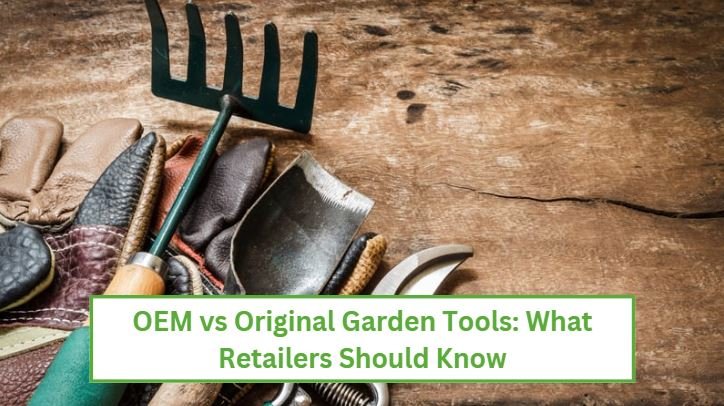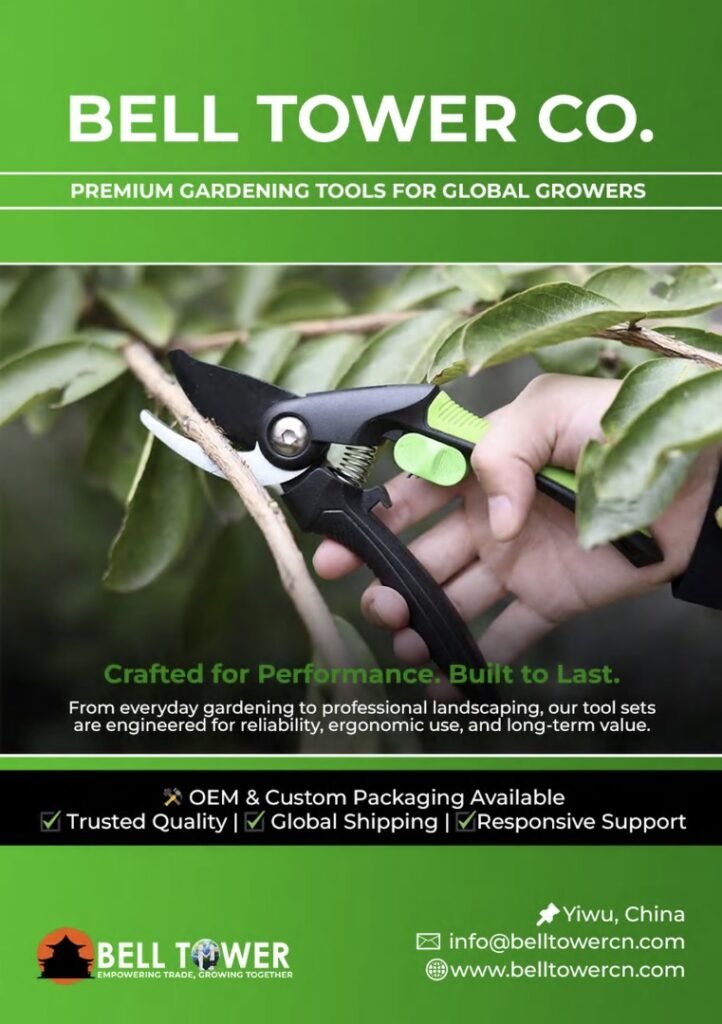If you’ve been trying to cut delicate herbs with pruners and tackle thick branches with scissors, you need to read this comparison post.
Pruning shears and scissors are two different beasts; they’re built differently to tackle different aspects of gardening.
Here’s a quick comparison: Shears are great for tackling thick stuff, whereas gardening scissors are more suited for delicate work, like deadheading flowers.
In this post, we’ll cover:
- The differences between shears and scissors
- Exactly when to use them both
- And more
Let’s get started.
Understanding Pruning Shears
Pruners are heavy-duty tools that tackle tough stuff. They’re built for power rather than finesse.
Here’s what makes them unique:
Tough Blades
They have blades made of hardened steel that cut through most plant material smoothly. The kind of stuff that could destroy other types of blades (Think rose canes and dead wood).
Bypass Vs. Anvil Action
Pruning shears have two types of cutting actions. Bypass pruners work like scissors, where two blades slide past each other to make cuts. These are great for most pruning tasks: roses, shrubs, and live branches.
An anvil pruner has a firm base (The anvil) on which the blade lands and makes cuts. They’re good for dead and dry wood and thick stems.
There’s a third type that uses a ratchet mechanism to make cuts easier on your hands. It eliminates the need for you to make a cut in one go; you can press the lever/button multiple times for a single cut.
This makes ratchet shears ideal for people with limited hand strength, elderly gardeners, or people who prefer comfort. The added feature does make this tool a little more expensive.
Strong Springs and Leverage

This is where pruners stand out; the springs and convenient hand grip make this tool a lot more convenient and effective to use. Cutting thick branches with pruners feels surprisingly easy, even if you have limited wrist strength.
Locking Mechanism
Another feature that makes pruners unique is their locking mechanism. This keeps the blades safely closed when not in use. Great for your hand’s safety.
Read More: How to Select Pruning Shears?
When are Pruning Shears Better Suited?
Here are some of the best use cases of pruners or secateurs:
- Cutting branches or stems that are thicker than a pencil lead (¼ inch)
- Pruning roses, shrubs, and fruit trees
- Removing tree branches
- Deadheading tough flowers
- Harvesting fruits and vegetables (Tomatoes, apples, etc.)
- Or, any job that requires clean cuts for healthy plant growth.
Check out Our Bell Anvil Pruner

What Exactly are Gardening Scissors?
Gardening scissors are like precision surgeons of your gardening toolkit. They’re different from your kitchen or office scissors.
Here’s what makes them special:
Ultra-Sharp, Thin Blades: Usually pointed, designed to slice cleanly through soft plant tissue without crushing it.
Lightweight and Nimble: They’re easy to maneuver, which makes them great for tight spaces and delicate foliage.
You May Also Like: An Introduction to Electric Pruning Shears
When Gardening Scissors are Better Suited
Let’s talk about when you should use gardening scissors over pruners:
Deadheading Flowers: Pruners are clumsy in this case. Use scissors for snipping delicate flowers.
Harvesting Herbs and Leafy Greens: Makes a clean snip, so you can use it on basil, mint, lettuce, and spinach plants.
Trimming Soft Stemmed Perennials: Another use case for garden scissors would be shaping plants like coleus and impatiens.
Floral Arrangement: If you want to make vases, scissors can help you cut flower stems cleanly. Crushed stems prevent water intake.
Why Is It Important to Use the Right Tool?
Grabbing whatever is available or easier to access might seem convenient, but it’s not always good for your plants’ health.
When you try to use the wrong tool, your hands get tired quickly, the job takes longer, and you could damage the plant.
Plus, your tools will thank you if you use them right. For instance, you can destroy scissors by using them on wood. Whereas, pruners tend to be clumsy with herbs.
Gardening Scissors Vs. Pruning Shears: Key Differences
| Feature | Gardening Scissors | Pruning Shears |
| Best For | Soft, green, non-woody material | Woody stems and branches |
| Stem Thickness | Up to 1/4 inches | Up to 3/4 inches |
| Blade Action | Scissor-like | Bypass and anvil |
| Example Jobs | Heavier, more robust | Pruning roses, cutting apple twigs |
| Power Source | Hand strength | High leverage (Mechanical advantage) |
| Weight/Feel | Lightweight | Heaver, more robust |
Frequently Asked Questions
Let’s address some frequently asked questions about pruning shears vs. gardening scissors.
Do You Need Pruning Shears or Can You Use?
You need pruning shears for woody stems thicker than ¼ inch. For soft stems (Herbs, flowers), use gardening scissors.
Which Tool is Best for Pruning?
Pruning shears, especially the bypass type, are a natural fit for pruning. They make clean and healthy cuts on woody stems up to ¾ inches thick. For dead and dry wood, use anvil pruners.
What is the Difference Between Shears and Scissors?
Pruning shears have tough blades and offer good leverage, which makes them effective and convenient, respectively. Scissors are more suited for delicate, soft stems.
Can You Use Scissors Instead of Shears?
No, don’t use scissors instead of shears, especially when it comes to trimming woody stems. It’ll crush your plants and ruin the tool. Pruners offer more power for clean cuts on thick growth.
Conclusion
Every gardening tool has some unique applications. Using the right tool for a specific job is crucial not only for your plants’ health, but it also prolongs the tool’s working life.
Pruners are a cutting powerhouse, allowing you to cut through tough plant material smoothly (E.g., woody stems). They offer leverage and have tough blades.
Gardening scissors, on the other hand, are perfect for soft, thin stems (Herbs, leafy greens, and delicate flowers).
You don’t have to choose one of these if you have both types of plants in your garden. Investing in both in such a case wouldn’t be a luxury; it’s a necessity.
Whenever you’re about to tackle a gardening task, match it to the suitable tool. If it’s woody and thick, grab your shears! If it’s thin and soft, reach out for the scissors!




